pax+amare
peace+love
Requiem
by Maurice Duruflé
and
Five Mystical Songs
by Richard Vaughan Williams
May 14 & 15
First Presbyterian Church

blank
this accordion would normally appear open but we are hiding it
Program
Requiem
by Maurice Duruflé
Chorus, Orchestra, Valdis Jansons, Baritone, and David Potter, Organist
I. Introit
II. Kyrie
III. Domine Jesu Christe
IV. Sanctus
V. Pie Jesu
VI. Agnus Dei
VII. Lux aeterna
VIII. Libera me
IX. In Paradisum
intermission
Five Mystical Songs
by Ralph Vaughan Williams
Chorus, Orchestra, Valdis Jansons, Baritone
No. 1. Easter
No. 2. I got me flowers
No. 3. Love bade me welcome
No. 4. The Call – baritone solo
No. 5. Antiphon
The Choral Society dedicates this concert, Pax+Amare, to the memory of our friend and faithful Passionata Concert Sponsor, Diane Dodds Reichert.
Diane, a UCSB alumna, local philanthropist, and arts supporter, was welcomed into the Choral Society family by her longtime friend, our Immediate Past President, Karen Williams. Captivated by our sound, Diane soon became a champion encourager of Jo Anne and our singers. She leaves a profound impact on our organization. Requiescat in pace, Diane.
Program Notes

A message from Jo Anne Wasserman
Requiem by Maurice Durufle and Five Mystical Songs by Ralph Vaughan Williams are two beautiful choral/orchestral works of the 20th century. It seemed fitting to me that, especially at this time, as we emerge from a devastating pandemic and witness the horrifying images of war, we spread a message of love, peace and hope. We are excited to share this transcendent music with our audience.
Both works feature our wonderful baritone soloist, Valdis Jansons. Valdis, the winner of many international voice competitions, will join us in his premiere performance with the Santa Barbara Choral Society.
The Choral Society will be celebrating its 75th anniversary next season. We are committed to presenting choral/orchestral masterworks at the highest artistic level. Music has the ability to go straight to the heart and lift the community in ways that only music can. I am excited and honored to lead our singers and orchestra in these performances.
Pure joy!
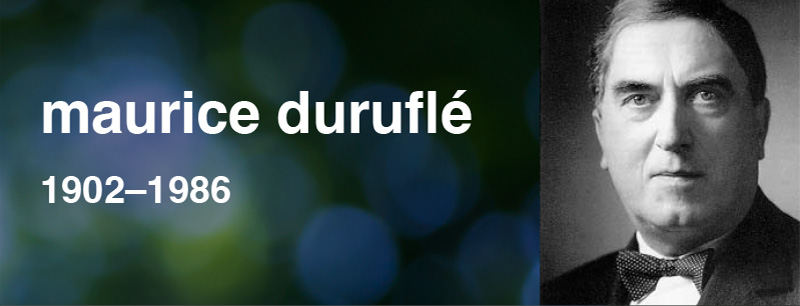
Requiem (1947), Maurice Duruflé
Like his mentor, Paul Dukas, whose work, The Sorcerer’s Apprentice became unforgettable in the film, Fantasia, Maurice Duruflé was incredibly self-effacing, and spent considerable time re-working his compositions until they achieved what he felt was the correct level of perfection. In fact, there are only 14 published Opus numbers to his name. Duruflé’s early musical training was at the cathedral in Rouen, where there was a famous school of Gregorian chant. This repertory of liturgical song had become something of a French specialty in the 19th century, and among the scholars working on the chants were a group of Benedictines at the French monastery of Solesmes, who developed a theory of chant rhythm as a free succession of notes of mostly equal value in groups of two and three. The Solesmes school of chant restoration and performance achieved widespread acceptance in the Catholic church and even some Protestant congregations.
After a thorough steeping in this tradition, Duruflé came to Paris and studied at the Conservatoire, where he confronted the tradition of Fauré, Debussy, and Ravel. When he came to write his Requiem in 1947, like the earliest composers of polyphonic Requiems, Duruflé took the Gregorian plainchant Mass for the Dead as his raw material. His declared intention was ‘to reconcile, as far as possible, Gregorian rhythm…with the exigencies of modern meter.’ That is, he did not transcribe literally the original melodies with their irregular alternation of twos and threes; he adjusted the rhythms subtly so that larger metric patterns emerge, but still he allowed the meter to shift frequently so that a sense of spontaneity is preserved. At the same time, he clothed the sometimes archaic-sounding melodies in sophisticated harmonies of the early modern school. Although he came from a different liturgical tradition, Duruflé used similar texts to those used by Fauré in his requiem.
If “requiem” conjures images of heaviness and mourning darkness, this Requiem will not meet expectations. Instead, Duruflé addresses the spiritual issues that surround life hereafter with tenderness and hope. He accomplished this pleasing feat in several ways. The piece is in the true French tendresse style, leaving out the chilling full Dies Irae and accentuating the aspect of forgiveness through the inclusion of a separate Pie Jesu and through constant repetition of the phrase ‘Requiem aeternam dona eis Domine’. Duruflé published the Requiem in three versions: for organ alone; for full orchestra and for organ and string quintet with harp, trumpets and timpani ad libitum.
Duruflé’s mid-twentieth century harmonies and his frequent use of sopranos and altos singing at the higher ends of their respective ranges, to youthful effect, also conveys a delicate tenderness to this work. His great care in matching the rhythms implied by the Gregorian chants upon which the requiem is based give the whole a gentle flowing sense that never abates. Duruflé’s Requiem tenderly brings us peace, light, and hope. By Barry Creasy
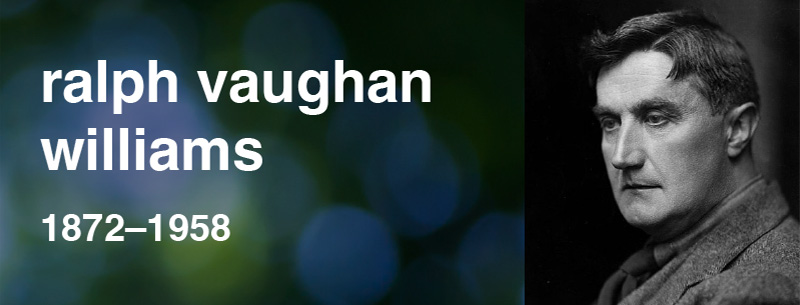
Ralph Vaughan Williams (1872–1958) “Rafe,” don’t call me Ralph!
Unlike his French counterpart, Maurice Duruflé, Ralph Vaughan Williams was a prodigious composer, creating nine symphonies along with operas, ballets, chamber music, as well as secular and religious vocal pieces during his more than 60 active composing years. From the mid-1890s to 1950 he set more than 80 poems for voice and piano. His music was wide-ranging, from contemplative and trance-like to pugnacious and sinister, from pastoral to gravely serene.
Vaughan Williams was born in 1842 to a well-to-do English family with direct ties to Joseph Wedgewood and Charles Darwin. He insisted on the traditional English pronunciation of his first name as “Rafe” and bristled should anyone make the mistake of calling him Ralph!
One of the most famous British symphonists, Vaughan Williams is perhaps best known for concert works such as Fantasia on a Theme by Thomas Tallis, and The Lark Ascending.
In 1847 at age 5, he wrote his first composition for piano but he preferred, and then studied, violin. After preparatory school, he was accepted to the Royal College of Music, where he would later serve on the faculty for 20 years. He also attended Cambridge where he earned his Doctorate in Music. At the Royal College, he met and became lifelong friends with Gustav Holst. When Holst died in 1934, Vaughan Williams’ music took a dark turn, with his Fourth Symphony reflecting both his grief, and the international tension brewing that would later erupt into another World War.
Vaughan Williams studied with Sir Edward Elgar and briefly with Maurice Ravel, who he said helped him “escape the heavy contrapuntal Teutonic manner of the time.” He collected English folk songs and loved Tudor and Stuart-era music, which helped him shape his own choral compositions.
In his twenties, he married his childhood sweetheart, Adeline, and forty years later fell in love with his muse, Ursula. She moved in with the couple and cared for his then-ailing wife who passed away two years later. The lovers then married.
Vaughan Williams wrote his final symphony at age 85. He twice refused knighthood, but finally did accept an “Order of Merit” and an honorary Doctorate of Music from Oxford. By Marylove Thralls
Jo Anne Wasserman
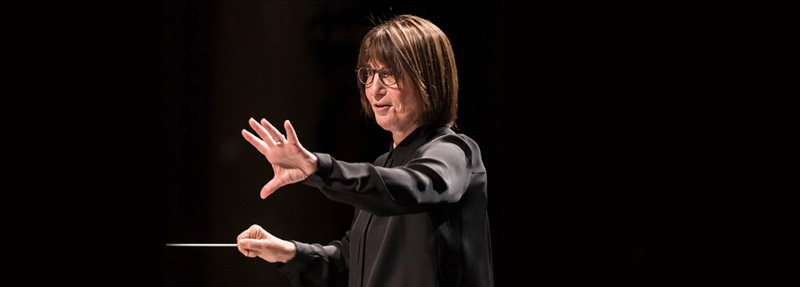
Artistic Director and Conductor
In her 29th season as Conductor and Artistic Director of The Choral Society, Jo Anne Wasserman, is thrilled to be back onstage with The Choral Society after a 24-month Covid-imposed break. In 2020, Wasserman masterminded the ensemble’s first virtual performance, How Can We Keep From Singing—see sbchoral.org (after the concert!). Her latest brainchild is our first Community Sing workshop next Saturday, Sing With Me! featuring Dr. Eugene Rogers. Wasserman has tackled every major choral work in the repertoire. She conducted International Performance Tours in Eastern Europe, Italy, Bavaria and Spain, including Mass in St. Peter’s Basilica, Rome, and performances of works by Morten Lauridsen, while traveling with the legendary composer in Italy.
Ms. Wasserman has worked with an impressive list of conductors, including John Alexander and Lawrence Christensen, and participated in master classes with Paul Salamunovich, the late Robert Shaw, and Roger Wagner. She has been a Master Class Conductor at the Oregon Bach Festival under Helmut Rilling, Chorus Master for Opera Santa Barbara, served on the faculty of Cal State Northridge, and conducted the Women’s Chorale at Westmont College.
Career highlights include the world-premiere performances of Orff’s Carmina Burana with State Street Ballet, showcasing the original work of choreographer William Soleau (2008), which were also the first shows after the inaugural concert in the newly-renovated Granada Theatre. Other highlights are Verdi’s Requiem, Vaughan Williams’ A Sea Symphony, and LoveLoveLove, a tribute to the Beatles, arranged by local composer Steven Dombek with State Street Ballet performing original choreography by William Soleau. That concert included a world premiere of Sir George Martin’s own Mission Chorales, conducted by Sir George himself. Wasserman conducted the Worldwide Rolling (Mozart) Requiem performance on the first anniversary of 9/11 in 2002 and the 10-year anniversary performance in 2011. In the Masterworks series, she conducted the Bach B Minor Mass (2011), and the West Coast premiere of the Rain Sequence by noted African-American composer Dr. Rollo Dillworth (2012). For her 20th Season, she conducted Beethoven’s Choral Fantasy, featuring her son, concert pianist Alexander Wasserman.
Ms. Wasserman’s dedication to music education, and her philosophy of increasing cultural awareness through song has enlivened The Choral Society’s 74-year commitment to sharing excellence in choral music both locally and internationally.
Valdis Jansons - Baritone
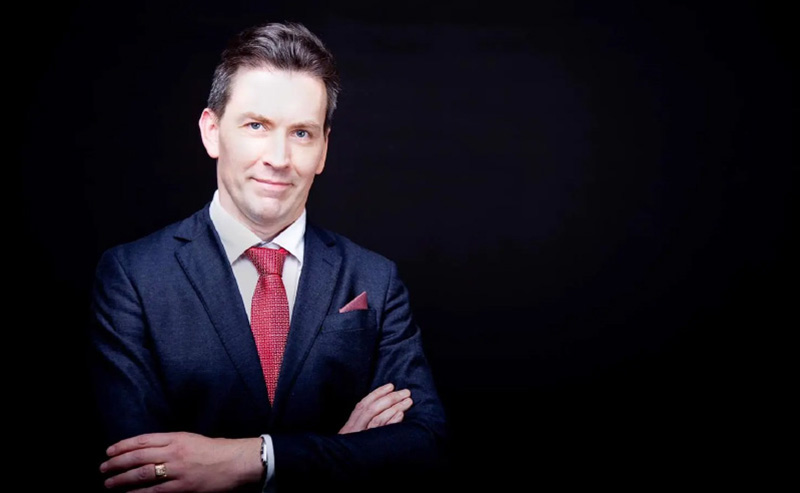
Since making his operatic debut in 2004, Latvian baritone Valdis Jansons has sung over 55 major roles in more than 70 theaters worldwide. From Verona to Bejing, Lincoln Center to Rio de Janeiro, Mr. Jansons has thrilled audiences with his “varied and nuanced phrasing, expressive singing, beautiful voice and great vocal line” winning a host of international competitions while amassing many critical accolades for his performances. Among his future engagements are: baritone soloist in Orff’s Carmina Burana at Opera de Saint-Etienne (France) in June, as Renato in Verdi’s Un Ballo in Maschera at Opera pa Skaret (Sweden) in August, and as Macbeth in Verdi’s eponymous opera in 2023. The Choral Society is thrilled to have Mr. Jansons perform as the soloist for this concert.
David Potter - Organist
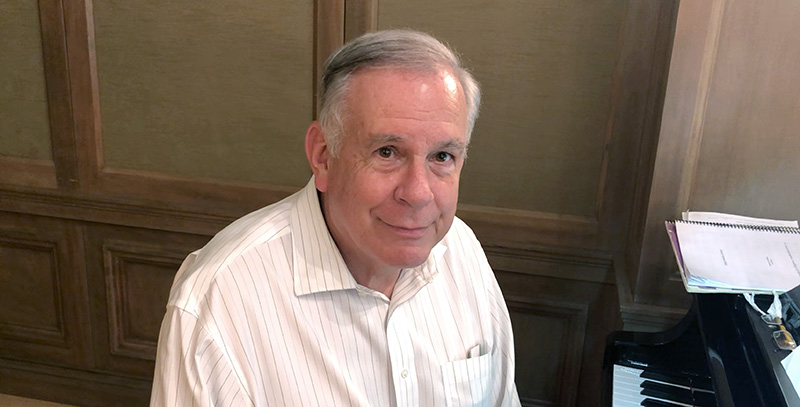
David Potter has conducted, musically directed, and played in over 230 musical productions. His many credits include music director for Man of La Mancha at the Rubicon Theatre in Ventura and musical director for Jesus Christ Superstar, starring Ted Nealy and Carl Anderson at the Concord Pavilion. He directed the West Coast premiere of The Baker’s Wife with Wanda Richert, and in Los Angeles, They’re Playing Our Song with Joyce DeWitt and Richard Kline, and Bells Are Ringing with Nancy Dussault. For the Rubicon Theatre Company, David has been Musical Director for Old Wicked Songs, High Button Shoes with Jason Grae and Susan Egan, and Tintypes. For Santa Barbara City College he has recently musically directed productions of Bat Boy, the Musical, Violet, The Rocky Horror Picture Show and The Spitfire Grill. He composed the music for Joan of Arc performed locally in Santa Barbara and also in New York’s Westside Theatre. For the Ensemble Theatre Company, he musically directed Gun Metal Blues this past October. David attended California Institute of the Arts and Music Academy of the West, where he accompanied for Martial Singher. He has accompanied many singers in concerts including Marni Nixon, Marvin Hayes and Erich Parce. An accomplished organist as well, he was the organ soloist with the Santa Barbara Symphony in their performance of the Saint-Saens Organ Symphony. He is Co-founder and President of the Contemporary Music Theatre of Santa Barbara; David is presently the Director of Music and Liturgy for San Roque Catholic Church. David has won several Drama-Logue Awards, five Independent Theatre Awards and the local Hero Award from the Independent.
the orchestra
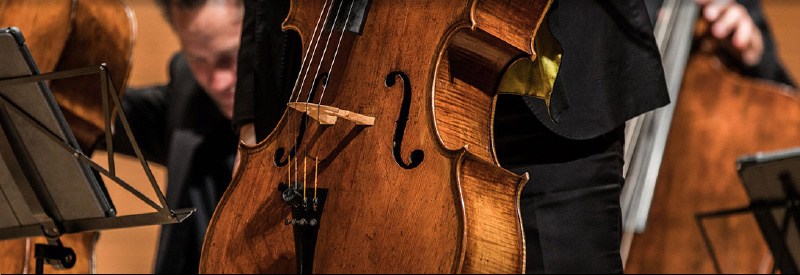
Our professional orchestra today was assembled by Jeanne Ullom, our long-time contractor, under the direction of Jo Anne Wasserman. Ms. Ullom brings professional ASCAP musicians from Southern California. ASCAP is the American Society of Composers, Authors, and Publishers, which protects the creative rights of these musicians.
1st Violins
Ji Young An, Concertmaster
Steven Zander
Yaeri Choi
Maia Zander
Luke Santonastaso
2nd Violins
Jeanne Ullom, Contractor
Claude-Lise La Franque
Lisa Shmayevich
Brian Benning
Violas
Diane Gilbert
Karen Long
Jonathan Morgan
Cellos
Jonathan Flaksman
Madlen Sarkissian
Mark Bassett
Basses
Brianna Goldberg
Ryan Baird
Flutes
Kathy Marsh
Laura Walter
Oboes
Cathy Del Russo
Robert Walker
Clarinets
Michael Grego
Stefani Feldman
Bassoons
Andy Radford
Elise Unruh
Horns
Chris Wilson
Adrian Dunker
Trumpets
John Ernest
Dave Etterbeek
Mike Zonshine
Timpani
Alan Peck
Harp
Allison Allport
the choral society
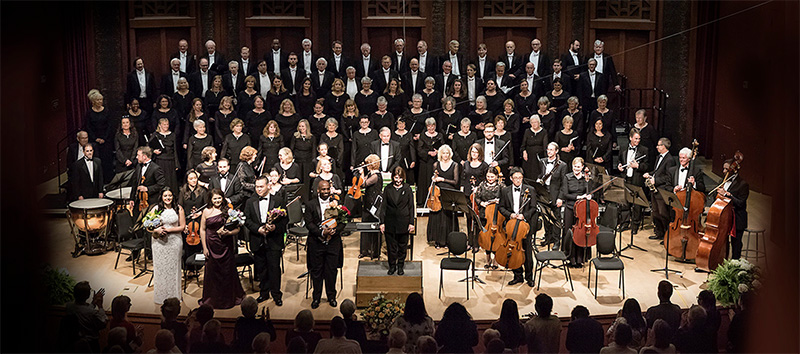
We celebrate the joy of live choral music by performing exceptional classical masterpieces and diverse, modern works for the widest possible audience.
Founded in 1948, The Santa Barbara Choral Society is the central coast’s oldest semi-professional community chorus. It normally comprises approximately 80 singers drawn primarily from Santa Barbara County, but also hailing from the greater Los Angeles area. Esteemed choral conductors Paul Salamunovich and Vance George praised The Choral Society as one of the finest community choruses on the West Coast.
The Choral Society promotes artistic development and provides opportunities for individual community members to study and perform great works of choral music, including works by contemporary composers. Committed to sustaining professional choral musicians in the area, The Choral Society employs a core group of professional singers to lead and mentor their voice sections.
The Santa Barbara Choral Society is a 501(c)(3) Non-profit Organization.
Tax ID 77-0032197
Board of Directors
Todd Aldrich, President
Kate Rees, Vice President
Jody Dolan Holehouse, Treasurer
Claudia Scott, Secretary
Margo Callis
John Rodkey
Debra Stewart, Past President
Artistic Staff
Jo Anne Wasserman, Conductor and Artistic Director
Steven Thomson, Assistant to the Conductor
David Potter, Accompanist
the venue

Founded in 1869, when Santa Barbara had just 2,000 residents, First Presbyterian Church dedicated and moved into its new building—this sanctuary—in 1973. This soaring, modern building features a large Celtic cross as an architectural element in the ceiling, which is also visible from the air and on Google maps. The space has marvelous acoustics and an excellent pipe organ. From the outside, the building is modern yet has the solid feel of classic Santa Barbara architecture like the nearby Santa Barbara Mission. The building was designed by Richard Bliss Nelson (1922-2017), an award-winning local architect who trained under Lutah Maria Riggs and Edwards and Plunkett Architects. He was a member of the church and considered the First Presbyterian cross design a “God-given dream.” Mr. Nelson would have been 100 years old this year.
Music has always been an important part of First Presbyterian Church, especially singing. The church has had a hand bell choir since 1976. The church makes its sanctuary available to the community for performances and our VIP reception will be held in the beautiful fellowship hall across the patio. Santa Barbara Choral Society has performed in this venue since at least 1980. During the pandemic, the church undertook a major renovation of the lighting and sound, installing a stadium-quality sound system, large drop-down screens and theatre-style lighting, which is run by trained church staff. Choral Society is grateful to First Presbyterian Church for the use of this wonderful space for our concert.
our supporters

We are extremely grateful for our wonderful supporters!
Passionata – $25,000+
Todd and Allyson Aldrich
Kate and Brooks Firestone
Richard and Marilyn Mazess
Walter J. and Holly O. Thomson Foundation
US Small Business Administration
Stanza – $10,000+
Ann Jackson Family Foundation
California Small Business Administration
Towbes Foundation
Baton – $5000+
Jody Dolan Holehouse & Tom Holehouse
Schlinger Chrisman Foundation
Debra Stewart
The City of Santa Barbara
Karen & Ross Williams
Soli – $2500+
Margo & James Callis
Nancy & Frederic M Golden
Gabriella Little
Montecito Bank & Trust
James and Susan Robbins
Canto – $1000+
John Baker
Erica DiBartolomeo
Ray & Dana DiBartolomeo
Marshall Gorges
Steve Hammer
John & Eleanor Lynn
Kathleen Ann McGuire
Brian & Gisele McDermott
Alison Mitchell
Kate Rees
Visionary – $500+
Karen & Peter Brill
Rinda R. & Michael Brown
Barbara Burger & Paul Munch
John & Mary C. Cochrane
Deneen Demourkas
Michael & Mary Dan Eades
W.F. Bartlett & Birthe Francis
Robert Hart
Julie A Hanson-Smith
Manuela Geiger-Kolbitsch & Clemens Kolbitsch
Gail Lucas
Nicholas Mutton
Joan Renehan
Rotary Club of Montecito Foundation
John R Rodkey
Claudia H Scott
Shane Williams
Sponsoring – $250+
Deb Artz
Anita S Baldwin
Raoul & Franziska Balcaen
Nancy J Betz-Cosenza
Catherine Binger
John & Hazel Blankenship
Dan & Mary Burnham
Mary Byrd
Janey & J. Kenneth Campbell
Thomas Carr
Kay Chambers
Maria L Chesley
Nathalie E Confiac
Marcia Constance
Barry & Pamela Enticknap
Sharla Fell
Jeff & Julie Harris
Jennica Harris
Ken Hunter
Thomas Hurd
Betsy Ingalls
Charles Journey
Nancy Marilyn Keele
John Kennedy
Bob & Michelle Lally
Peter & Sally Lombrozo
Lori Hoffman
John & Kitty Maxwell
James McNabb
Gretchen Murray
Gregory Pantages
Kathy Piasecki
Eileen White Read
Michelle Richardson
Paul & Gayle Satterblom
Lu Setnicka
Linda Shobe
Stephen Charles C Singleton
James A. Stemen
Jim Taylor
Marylove Thralls & Michael Hackett
Cherie Topper
Kate Varley
Paul & Nancy Warner
Mike Weissman
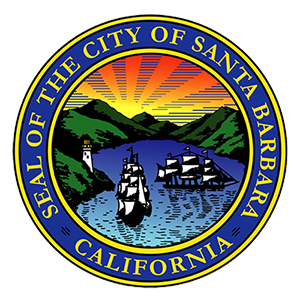
LEGACY CIRCLE
The Santa Barbara Choral Society acknowledges and shall always remember with gratitude the commitment of those who have donated to our Endowment Fund at the Santa Barbara Foundation or have remembered the Choral Society in their estate plans.
JoAnne Ando, Dr. Gil & Carol Ashor, Laurie McCutcheon Berg, Barbara Burger, Jack & Ursula Dimock, Joanne Doehler, Brooks & Kate Firestone, Marilyn Gilbert, Charles & Barbara Greene, Don Jeske, Kathy McGuire, Dr. Dan & Mary Secord, Debra & Steve Stewart, Ross & Karen Williams.
Find out about keeping the song alive in perpetuity through a gift to our Legacy Circle Endowment at sbchoral.org/support/legacy. The Choral Society also recognizes and thanks supporters who have notified us of their intent to remember The Choral Society in their estate plans – Dr. Gil & Carol Ashor and Debra & Steve Stewart.
ADVISORY COUNCIL
The Choral Society is honored to be associated with many prominent supporters of performing arts in the Santa Barbara community. We are grateful for your participation.
Brooks Firestone, Chair, Joanne Ando, Bruce Anticouni, Molly Ballantine, Deborah Bertling, Sue Birch, Barbara Burger, Cynthia Burt, Sue Cook, Jan Dunbar, Dr. Michael Eades, Dr. Charles Greene, Robert Hart, Hayley Firestone Jessup, Mahri Kerley, Richard Mazess, Brian McDermott, Dr. Assad Mora, Stefan Riesenfeld, Joan Speirs, Kathleen Stinnett, Dr. Paula Von Simson.
ACKNOWLEDGEMENTS
We wish to give special thanks all of our dedicated volunteers and give special recognition to several of them:
Jim Robbins, Artistic Committee chair
John Baker, Rehearsal set up
John Maxwell, Office Manager
Brian Morris, IT
Deborah Rosique, Music Librarian and Auditions Secretary
Marylove Thralls and Susan Robbins, Marketing and Advertising
CREATIVE PROFESSIONALS
David Eck, Production Manager, Lighting and Visual Effects
Irene Hoffman, Design and Visual Effects
Ruben Mislang, M4 Interactive, Design and Development
upcoming events
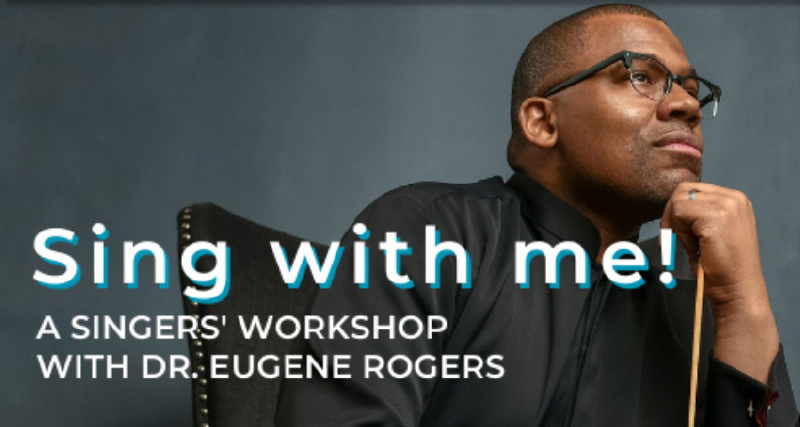
Saturday, May 21, 2022, 10am – 3:30pm
COMMUNITY SING
WORKSHOP WITH DR. EUGENE ROGERS
Join us for a full-day singers’ workshop with this renowned conductor and the Choral Society. Spaces are still available. Student scholarships are available.
Monday, May 30, 2022, 11am – 12pm
Memorial Day Tribute to the Armed Services
Sponsored by Pierre Claeyssens’ Veterans Foundation. Please join us in this moving tribute of music and words honoring the sacrifices of our military personnel. FREE to all, no ticket required.
Santa Barbara Cemetery
We hope you enjoy the concert.
SUPPORT
The Choral Society

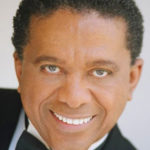 American baritone, Ralph Cato has travelled the world extensively, telling stories in song with his warm, clarion baritone voice.
American baritone, Ralph Cato has travelled the world extensively, telling stories in song with his warm, clarion baritone voice.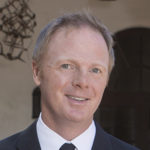 Tenor, Benjamin Brecher has performed over fifty operatic roles with many of the world’s most prestigious opera companies, specializing in the high lying lyric tenor repertoire. He has performed 16 roles with New York City Opera alone. Career highlights include performances with Opera Orchestra of New York, L’Opera de Nice, Rossini Opera Festival in Pesaro, L’Opera de Montreal, Santa Fe Opera, Opera Theatre of St. Louis, among many others. His orchestral solo repertoire includes Mozart, Handel, Orff, Bach, Haydn, as well as many performances of Britten. In 2000 he began performing the great Irish Tenor songs in a concert produced for him entitled A Celtic Celebration, Twenty years later, the show has become a North American hit with performances with 45 Symphonies in North America. Ben continues his discography having added his twelfth recording in 2016 Forgotten Liszt, with pianist Robert Koenig, and will record a new release in 2022 entitled “Three Centuries of Thomas Moore” including the music of Britten, Berlioz, and Sarah Gibson on MSR Classics. He is a Professor of Voice at University of California Santa Barbara, where he has served as the Head of Voice.
Tenor, Benjamin Brecher has performed over fifty operatic roles with many of the world’s most prestigious opera companies, specializing in the high lying lyric tenor repertoire. He has performed 16 roles with New York City Opera alone. Career highlights include performances with Opera Orchestra of New York, L’Opera de Nice, Rossini Opera Festival in Pesaro, L’Opera de Montreal, Santa Fe Opera, Opera Theatre of St. Louis, among many others. His orchestral solo repertoire includes Mozart, Handel, Orff, Bach, Haydn, as well as many performances of Britten. In 2000 he began performing the great Irish Tenor songs in a concert produced for him entitled A Celtic Celebration, Twenty years later, the show has become a North American hit with performances with 45 Symphonies in North America. Ben continues his discography having added his twelfth recording in 2016 Forgotten Liszt, with pianist Robert Koenig, and will record a new release in 2022 entitled “Three Centuries of Thomas Moore” including the music of Britten, Berlioz, and Sarah Gibson on MSR Classics. He is a Professor of Voice at University of California Santa Barbara, where he has served as the Head of Voice.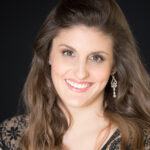 Born and raised in Southern California, April Amante is a versatile soprano with expertise and facility in repertoire spanning from early music to contemporary musical theater.
Born and raised in Southern California, April Amante is a versatile soprano with expertise and facility in repertoire spanning from early music to contemporary musical theater.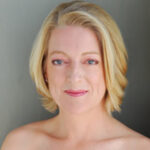 Tracy Van Fleet is pleased to return to the Santa Barbara Choral Society. As a soloist, she has performed with the Los Angeles Master Chorale, Lüneburg Symphony in Germany, Orquesta Filarmónica de Boca del Río in Mexico, Pasadena Symphony, Naples Philharmonic, Los Angeles Bach Festival, San Diego Chamber Orchestra, Colorado Philharmonic, USC Symphony and Chorus, and others. She has had many appearances with the Los Angeles Opera, Los Angeles Philharmonic, Pacific Symphony, Hollywood Bowl Orchestra, Opera Pacific, San Diego Opera and Opera Colorado.
Tracy Van Fleet is pleased to return to the Santa Barbara Choral Society. As a soloist, she has performed with the Los Angeles Master Chorale, Lüneburg Symphony in Germany, Orquesta Filarmónica de Boca del Río in Mexico, Pasadena Symphony, Naples Philharmonic, Los Angeles Bach Festival, San Diego Chamber Orchestra, Colorado Philharmonic, USC Symphony and Chorus, and others. She has had many appearances with the Los Angeles Opera, Los Angeles Philharmonic, Pacific Symphony, Hollywood Bowl Orchestra, Opera Pacific, San Diego Opera and Opera Colorado.